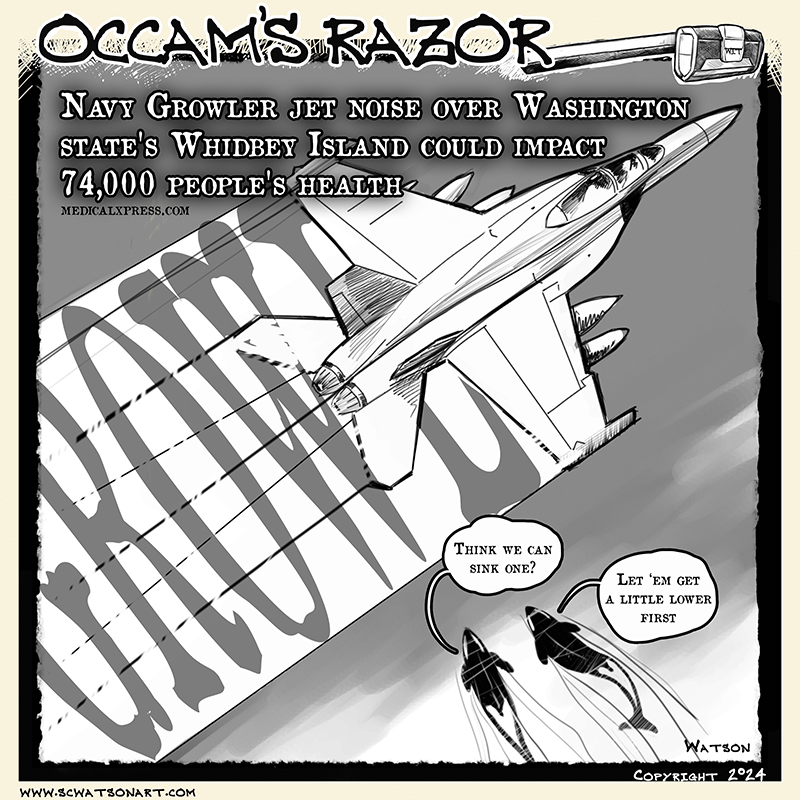||| BY MATTHEW GILBERT, REPORTER |||
The second part of an ambitious tourism research project, commissioned in 2015 by the Terrestrial Managers Group of San Juan County and carried out by Confluence Research and Consulting, has finally been released. Phase 1, released in June 2018, focused on visitors; Phase 2 surveyed locals, both residents and businesses. The coverage and response rate for both surveys were high, providing useful insights on the many issues addressed.
This final piece of the tourism puzzle arrives just in time as issues of growth and over-tourism are becoming front and center, not just in the 20-year update of the Comprehensive Plan but as candidates position themselves for a run at the open Commissioner seats in November. The numbers speak for themselves: After “bottoming out” during the Great Recession, ferry traffic to the San Juans has increased approximately 15% since 2011 to an estimated 950,000 vehicles and 2M riders, with vehicle growth outpacing rider growth.
Local Opinions on Tourism
The official title of the new report is “Tourism and Visitor Management in the San Juan Islands.” It’s organized into four parts:
- Part 1: Resident and Business Survey
- Part II: Visiting Boater Survey
- Part III: Remote Islands Visitor Survey
- Part IV: Conclusions and Recommendations
Among the many issues tested, a few stood out (with island-specific differences included in the report):
- 94% of residents feel that the county is at (52%) or over (42%) capacity during the peak summer season while businesses are somewhat more tolerant: 54% at capacity, 25% over capacity.
- Both residents (82%) and businesses (76%) agree that “Vacation rentals (VRs) have reduced housing affordability,” a noteworthy finding given that this is probably the closest thing to a county-wide VR survey you will get.
- Both groups agree that “Tourism supports more amenities than residents alone” (residents – 78% / businesses – 91%) and that “Tourism has improved economic living standards” (residents – 67% / businesses – 86%).
- They are not as aligned around “negative impact on the environment” (residents – 60% / businesses – 46%) or “levels of impact are acceptable” (residents – 44% / businesses – 62%).
- Residents who had lived in the county for less than 10 years were more likely than longer-term residents to agree with the statement, “If it helps the local economy grow, it is acceptable if tourism changes some aspects of life in the San Juan Islands.”
Among 25 “management actions” tested by the consultants, the study shows considerable overlap between residents and businesses, with a few unsurprising differences:
Residents:
- Reserve more space on ferries for residents
- Tighten whale-watching management
- Address biking infrastructure needs
- Improve village congestion and parking
- Acquire more public land
Businesses:
- Address biking infrastructure needs
- Reserve more space on ferries for residents
- Tighten whale-watching management
- Improve village congestion and parking
- Acquire more public land
Both groups opposed more development but parted ways over reducing tourism promotion and limiting the number of visitors (residents trending for, businesses against).
Visitor Experiences
To help put this latest survey data into perspective, it will help to revisit Phase 1 research, which focused on the visitor experience. Most apparent – and not surprising – was the strength of the islands’ environmental appeal in motivating a visit:
Very → Extremely Important
- Natural / rural scenery
- Beach / shore hiking
- Marine wildlife viewing
Very Important
- Friendliness of locals
- Forest / mountain hiking
- Relaxed pace of life
Regarding visitor traffic, the report differentiated density (objective / descriptive – the number of people in a certain area) from crowding (subjective – “a negative evaluation of density”). It found that during peak season on Orcas, the Cascade Lake day use area is characterized as being at “Overcapacity” (“Studies and management likely needed to preserve quality”) while the Mountain Lake day use area qualifies as “High normal” (“Should be studied if use increases expected; managers might anticipate problems”). County-wide, visitors are well aware of summer crowding issues: Nearly 90% were opposed to “allowing crowding to increase.” At the same time, nearly 80% opposed any limits on visitation.
The Visitor Study also featured a section on housing and VRs. Using county historical records dating back from 2017, it calculated changes in the proportion of different housing stocks between 2000 and 2015:
- VRs have more than tripled in the last 15 years.
- “Vacant” houses went up by 65% but have stabilized.
- Long-term rentals went up only 35% but have stabilized or decreased.
To these points, it concluded the following:
- “If these trends continue, visitor accommodation could increase substantially even if no new lodging is actually built.”
- “There is a need to maintain an accurate, comprehensive, ‘real time’ housing database to follow these trends.”
There’s a more granular analysis of VR profiles and yearly use in the Resident-Business report (see pp. 12 – 14).
Have we reached a limit?
Both studies took different paths in trying to answer the question, “Are the San Juan Islands approaching visitor capacity?” In defining the county’s current “default management strategy” as “allowing congestion and crowding to increase,” the Visitor Study report concludes that
There are tradeoffs between limiting visitation/tourism promotion, developing infrastructure to accommodate use, and allowing congestion and crowding to increase.Change one, and there will be effects on others. Results here show clear opposition to congestion and crowding, but less substantial support for how to accomplish this goal (limiting visitation/promotion or increasing development). This reluctance to make difficult choices is not surprising, and a common finding in visitor impact studies.
The Resident-Business Study sounded a bit more hopeful (text bolded in report):
When asked whether they support visitation limits if use continues to increase, 50% of residents said “yes” limits will be needed eventually, and another 35% said “maybe” (85% combined). Even among businesses, 34% said “yes,” 41% said “maybe,” and only 25% said “never.” This suggests considerable support for planning to develop a sustainable equilibrium that includes a vibrant tourist economy, high quality visitor experiences, and quality of life for residents.
The consultants referenced a study that described the stages of a “tourism life cycle”:
Earlier stages of exploration, development, and consolidation often lead to later stages of stagnation and decline. Avoiding these later stages requires recognition that uncontrolled growth can “love a place to death,” and making sure that use and development are in balance with infrastructure and the destination’s intended types of experiences. . . .The San Juan Islands have an opportunity to manage use before it substantially detracts from the quality of visitor experiences or quality of residents’ life.
During the public comment period at the recent County Council meeting on Orcas, a couple of key questions were posed: What kind of community do we want to be? Are we rural or a resort? Can we be both pro-tourism and pro-community? Caught between that tug of war are the islands themselves and the unique environment that draws people to us.
As noted in the study, in 2017 the Terrestrial Managers Group floated the idea of a non-binding, multi-agency “Cooperative Action Plan” tasked with expediting a process for implementing both short- and long-term responses to issues identified in the report. To jump-start that initiative, the report offered 30 ideas addressing a range of infrastructure, regulation, education, and capacity actions. There is also an expectation that the results of the research have laid the foundation for a Tourism Master Plan – the final piece in the county’s efforts to envision and shape our community’s future.








Tourism in San Juan Islands – Conclusions and recommendations Page 6
“When considering projects, it is important to recognize the conundrum that improved infrastructure may also attract additional use (“build it and they will come”), so capacity remains an important part of the discussion. We think it makes sense to develop infrastructure in balance with an intentional capacity, and then adopt explicit policies that limit visitation to capacity and keep infrastructure up to standards. This is the stated goal of federal agency visitor use management programs.
Tourism in San Juan Islands – Conclusions and recommendations Page 4
“The recipe for success is not necessarily more infrastructure to handle higher use (such as ever-growing accommodation or transportation systems), but rather defining quality and managing use and impacts
so they do not exceed acceptable levels.”
“Unplanned, uncontrolled, unlimited growth on an island = irresponsible leadership” A.C.
Thank you Mathew, for breaking this out for us.
I found this question from the recent county council meeting most compelling – Are we rural or a resort?
And this statement indicating how our island is changing:
Residents who had lived in the county for less than 10 years were more likely than longer-term residents to agree with the statement,
“If it helps the local economy grow, it is acceptable if tourism changes some aspects of life in the San Juan Islands.”
“Each person fixes their sense of this place at the time they arrive so each of us has a different reference point for how far this peculiar form of deterioration has progressed.” B.A.
Michael Johnson: To what do the cryptic quotes identified by initials refer to — A.C.; B.A.?
Rather underwhelming and general. In-person traffic control at Main St. and Lovers Lane during “ferry rushes”? Why not a traffic light? But seriously, how did I miss these disabling ferry rushes? Other than the occasional yahoo tailgating because he or she didn’t leave for the ferry soon enough, I see no ferry traffic issue that warrants intervention. Down at the terminal, maybe. Despite major improvements down there, it’s still a bit crazy on holiday weekends.
I hope that the study consultants were using the new, vetted VR rental numbers, which are dramatically smaller than those being broadcast around the island.
Hey Margie– these are the initials of individuals who made these statements previously, and though I felt comfortable issuing the quote… I didn’t ask permission to I.D. them publicly. I’ll PM you.
“I hope that the study consultants were using the new, vetted VR rental numbers, which are dramatically smaller than those being broadcast around the island.”
It is not likely they were since the new numbers are not official yet. Keep in mind Peg, “those being broadcast around the island” as you frame it, are county figures.
And, it’s about time– the county is “years behind” in their record keeping when it comes to the number of VRs (legal, illegal, and operating and not operating). The new numbers, once established, are welcome, and will be enlightening.
Once the county has finished updating their numbers on VRs (of those that wern’t in operation), they will hopefully begin to perform their due diligence on the number of VRs that “are operating” illegally throughout the county.
Michael–I agree. One issue that I have with the claim that there are many unregistered Vrs is that there is a full-time enforcement officer and a fine for any such rentals–why aren’t people reporting them? I don’t think that you need to go on record when reporting. It seems like the fastest way to get this segment cleaned up. Too bad the fines aren’t higher.